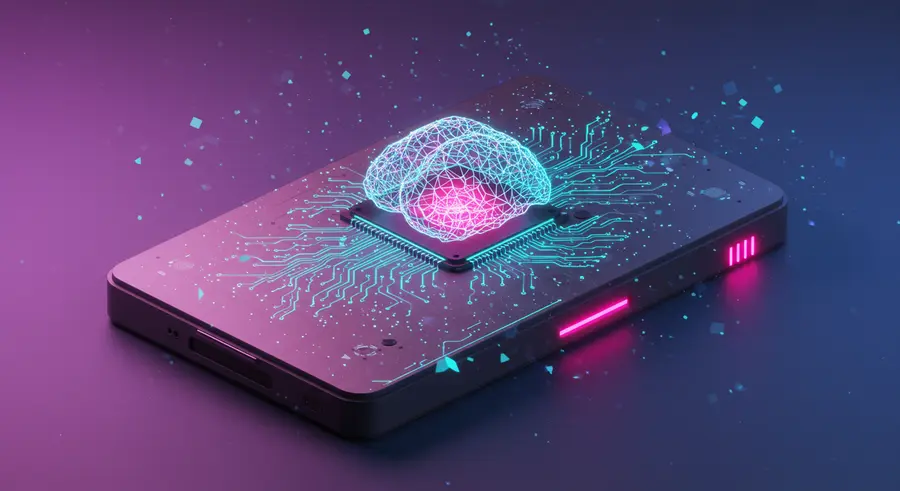Appearance

Welcome, tech pioneers! 👋 Today, we're diving deep into the fascinating world of Edge Computing, a paradigm shift that's redefining how we process, analyze, and interact with data. Imagine a future where real-time decisions are made right where the data is generated, without the latency of sending everything to a distant cloud. That's the promise of edge computing, and it's being supercharged by the incredible advancements in Artificial Intelligence (AI) and the blazing speed of 5G networks.
What is Edge Computing, Really? 🤔
At its core, edge computing is a distributed computing framework that brings computation and data storage closer to the sources of data. Instead of relying solely on centralized data centers or cloud servers, edge computing places "mini data centers" or computational power at the "edge" of the network. This "edge" can be anything from a smart factory floor, an autonomous vehicle, a smart city sensor, or even your smartphone!
Why is this a big deal? Think about it:
- Reduced Latency: Data doesn't have to travel far, leading to near-instantaneous responses. Critical for applications like autonomous driving, remote surgery, or real-time industrial automation.
- Bandwidth Optimization: Less data needs to be sent back to the central cloud, conserving valuable bandwidth and reducing network congestion.
- Enhanced Security & Privacy: Processing sensitive data locally minimizes exposure during transit, and often allows for compliance with local data sovereignty regulations.
- Offline Capabilities: Edge devices can operate and process data even with intermittent or no connectivity to the central cloud.
To understand more about its fundamental applications, you can explore our detailed guide on Use Cases and Benefits of Edge Computing.
The AI & 5G Synergy: A Game-Changer for the Edge 🤖📡
The true transformative power of edge computing emerges when it converges with AI and 5G. This trifecta creates an ecosystem capable of unparalleled real-time intelligence and responsiveness.
AI at the Edge: Intelligent Decisions, Instantly! 🧠
Bringing AI capabilities directly to edge devices means that data can be analyzed and acted upon without delay.
- Real-time Analytics: Imagine a surveillance camera with built-in AI that can detect anomalies instantly, alerting security personnel to potential threats as they happen, rather than sending footage to the cloud for later analysis.
- Predictive Maintenance: In industrial settings, edge AI can analyze sensor data from machinery to predict failures before they occur, scheduling maintenance proactively and preventing costly downtime.
- Personalized Experiences: Retail stores can use edge AI to analyze customer behavior in real-time, offering personalized promotions or product recommendations on the spot.
This shift reduces the need for massive data transmission, improves response times, and enhances privacy by processing data locally.
5G: The High-Speed Backbone for Edge Connectivity ⚡
5G isn't just about faster download speeds for your phone; it's a foundational technology for the widespread adoption of edge computing.
- Ultra-Low Latency: 5G's extremely low latency (as low as 1 millisecond) is crucial for applications requiring immediate feedback, like augmented reality (AR) experiences or vehicle-to-everything (V2X) communication in smart cities.
- Massive Connectivity: 5G can support a much higher density of connected devices, enabling millions of IoT sensors and edge devices to communicate simultaneously without network congestion.
- Enhanced Mobile Broadband: Faster speeds facilitate the rapid transfer of processed data from the edge to the cloud for long-term storage, deeper analysis, or training AI models.
Together, AI and 5G unlock the full potential of edge computing, making previously impossible applications a reality.
Key Trends Shaping the Edge Computing Landscape 📈
The future of edge computing is dynamic and rapidly evolving. Here are some key trends to watch:
- Edge-as-a-Service (EaaS): Similar to SaaS or IaaS, EaaS will provide managed edge infrastructure and services, simplifying deployment and management for businesses.
- Increased Focus on Security at the Edge: As more sensitive data is processed at the edge, robust security measures, including advanced encryption and zero-trust architectures, will become paramount.
- Micro Data Centers & Hyperconverged Infrastructure (HCI): Compact, integrated solutions are emerging to provide the necessary compute, storage, and networking capabilities at the edge.
- Sustainable Edge Computing (Green Computing): With the proliferation of edge devices, there's a growing emphasis on energy-efficient hardware and sustainable practices to reduce environmental impact.
- Edge Orchestration & Management: Centralized platforms will be crucial for managing, monitoring, and deploying applications across a vast, distributed network of edge devices.
- Edge Analytics & AI/MLOps at the Edge: The ability to perform complex data analytics and deploy, manage, and monitor AI/ML models directly on edge devices will become standard.
Use Cases: Where Edge Computing Shines Brightest ✨
- Autonomous Vehicles: Instant processing of sensor data (Lidar, cameras, radar) for navigation and collision avoidance without relying on distant cloud servers.
- Smart Cities: Real-time traffic management, intelligent public safety systems, and environmental monitoring.
- Healthcare: Remote patient monitoring, real-time analysis of medical images, and smart hospitals where critical decisions need immediate data.
- Manufacturing & Industry 4.0: Predictive maintenance, quality control on assembly lines, and optimization of operational processes.
- Retail: Personalized shopping experiences, inventory management, and loss prevention through in-store analytics.
- Augmented/Virtual Reality: Delivering low-latency, high-fidelity AR/VR experiences by processing complex graphics close to the user.
The Road Ahead 🛣️
Edge computing, bolstered by AI and 5G, isn't just a buzzword; it's a foundational technology that will drive the next wave of digital transformation. It promises a future where intelligence is ubiquitous, decisions are instantaneous, and our interactions with the digital world are seamless and profoundly impactful. As we continue to push the boundaries of what's possible, the edge will be at the forefront, powering innovations that reshape industries and improve lives globally.
What are your thoughts on the future of edge computing? Share your insights in the comments below! 👇